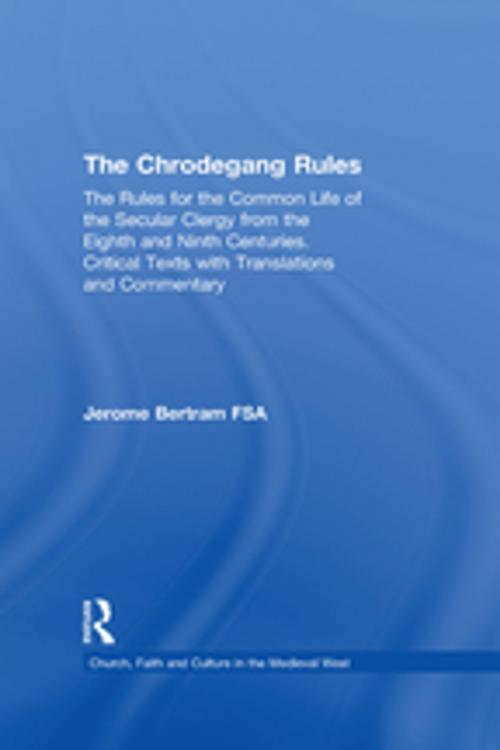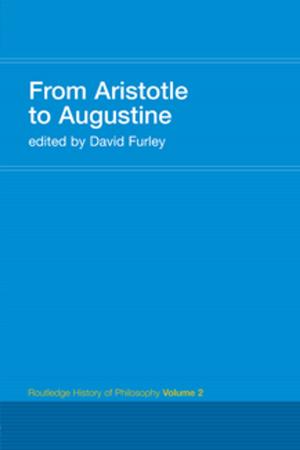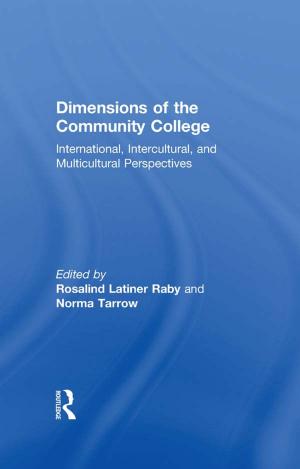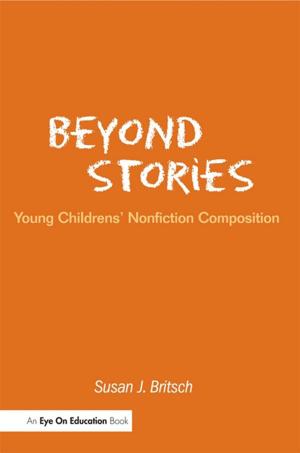The Chrodegang Rules
The Rules for the Common Life of the Secular Clergy from the Eighth and Ninth Centuries. Critical Texts with Translations and Commentary
Nonfiction, History| Author: | Jerome Bertram | ISBN: | 9781351892902 |
| Publisher: | Taylor and Francis | Publication: | September 8, 2017 |
| Imprint: | Routledge | Language: | English |
| Author: | Jerome Bertram |
| ISBN: | 9781351892902 |
| Publisher: | Taylor and Francis |
| Publication: | September 8, 2017 |
| Imprint: | Routledge |
| Language: | English |
Since its earliest days, the Christian Church sought to draw up rules by which its members could live together in religious communities. Whilst those of Augustine (c.400 AD) and Benedict (c.530 AD) provided detailed guidance for monastic life, it took another two centuries for equivalent rules for secular clergy to become accepted on a wide scale. The earliest surviving set of comprehensive rules for canons are those written in the mid-eighth century by St Chrodegang (c.712-766), Bishop of Metz. Writing initially for secular clergy at Metz Cathedral, this work shows how Chrodegang's rule borrowed much from the Benedictine tradition, dealing with many of the same concerns such as the housing, feeding and disciplining of members of the community and the daily routine of the divine offices. At a time when there was no consensus on how clergy should live - whether they should marry or were eligible to own property - Chrodegang's rule provided clear guidance on such issues, and inspired reformers across Europe to consider how clergy lived and interacted with wider society. Although his work was superseded within a generation by the Rule of Aachen, Chrodegang succeeded in setting the agenda for subsequent rules for canons and as such his rule deserves to be given more weight by Church historians than has hitherto been the case. Providing the Latin texts and English translations of the three surviving versions of Chrodegang's rule, (Regula Originalis Chrodegangi, Institutio Canonicorum, Regula Longior Canonicorum) this volume provides an invaluable resource to scholars of medieval Christian communities. Substantial introductions to each text provide historical context and bibliographic details, allowing them to be understood in a much fuller way than has hitherto been possible.
Since its earliest days, the Christian Church sought to draw up rules by which its members could live together in religious communities. Whilst those of Augustine (c.400 AD) and Benedict (c.530 AD) provided detailed guidance for monastic life, it took another two centuries for equivalent rules for secular clergy to become accepted on a wide scale. The earliest surviving set of comprehensive rules for canons are those written in the mid-eighth century by St Chrodegang (c.712-766), Bishop of Metz. Writing initially for secular clergy at Metz Cathedral, this work shows how Chrodegang's rule borrowed much from the Benedictine tradition, dealing with many of the same concerns such as the housing, feeding and disciplining of members of the community and the daily routine of the divine offices. At a time when there was no consensus on how clergy should live - whether they should marry or were eligible to own property - Chrodegang's rule provided clear guidance on such issues, and inspired reformers across Europe to consider how clergy lived and interacted with wider society. Although his work was superseded within a generation by the Rule of Aachen, Chrodegang succeeded in setting the agenda for subsequent rules for canons and as such his rule deserves to be given more weight by Church historians than has hitherto been the case. Providing the Latin texts and English translations of the three surviving versions of Chrodegang's rule, (Regula Originalis Chrodegangi, Institutio Canonicorum, Regula Longior Canonicorum) this volume provides an invaluable resource to scholars of medieval Christian communities. Substantial introductions to each text provide historical context and bibliographic details, allowing them to be understood in a much fuller way than has hitherto been possible.















